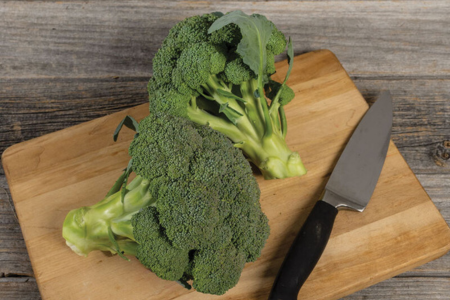- Ask a Grower
- Calculators & Planning Tools
- Cooperative Extension
- Disease Resistance Codes
- Farm Seed & Cover Crops Library
- Flower Library
- Fruit Library
- Glossary of Terms
- Farm Visits & Grower Profiles
- Hardiness Zones
- Herb Library
- Key Growing Information
- Methods, Tools & Supplies Library
- Organic Growing
- Vegetable Library
- Videos
- Webinars
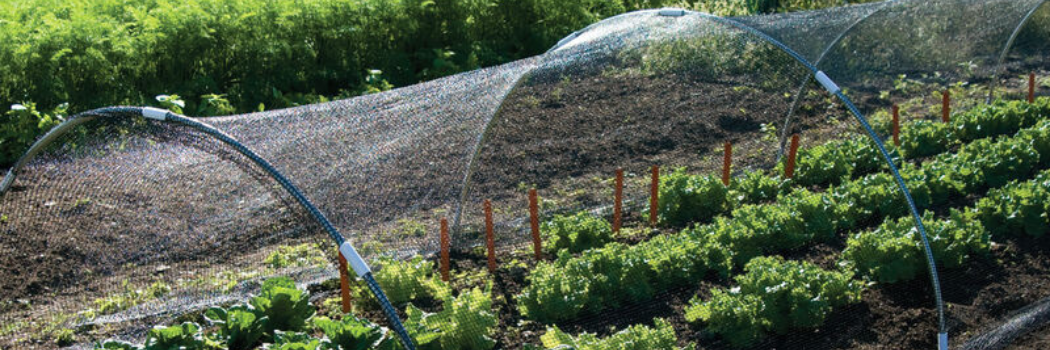
Selecting Varieties for Heat Tolerance
Helping your crops get through the heat of summer requires a multi-pronged approach. Cultural practices such as shading, irrigation, mulching, and post-harvest care are essential and covered in depth in our Beat the Heat article series. In combination with these cultural practices, variety selection is also paramount to success. At our Research Farm and trialing locations across the country, we trial and select varieties for their adaptability to heat stress.
Johnny’s Definition of “Heat Tolerant”
Our Heat Tolerant symbol indicates a variety that will perform relatively well (compared to other varieties within its crop group) when exposed to hot weather. Johnny’s Research Team assigns the Heat Tolerant symbol to individual varieties within crop groups that traditionally do not perform well in the heat (as opposed to warm season crops that thrive in the heat); we do this to guide growers to more suitable options.
Refine your product searches for “heat tolerant” and look for the Heat Tolerant symbol on product listings.

Filter your web searches by "heat tolerant" and look for the heat tolerant symbol on products in the Johnny's catalog.
What Makes a Variety Heat Tolerant?
We trial both cool-loving and heat-loving crop varieties to gather data on their performance, productivity, and flavor in high heat conditions.
Cool-Loving Crops
Our criteria for heat tolerance vary by crop and crop type. For cool-loving crops, we identify varieties that can handle more heat than standard varieties. Note that even the most heat tolerant varieties of the cool-loving crops may not be able to tolerate extreme heat, such as that found in the Southeast, Deep South, and Florida.
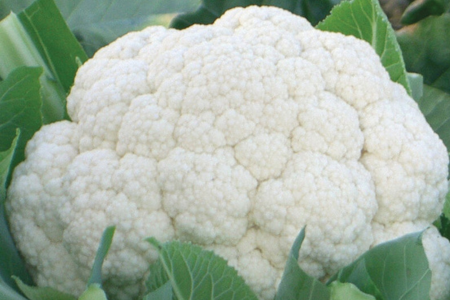
'Fujiyama' was bred to produce high-quality heads in warm weather.
Broccoli:
Varieties not tolerant to heat will bolt, producing flower stalks before heads have fully matured. Heat tolerance means that the heads have a good dark green color and a uniform bead and hold their quality for a few days before becoming unmarketable. Also, heat tolerant varieties can become oversized and still look relatively nice and still be marketable.Cauliflower:
Heat tolerance means the heads will have a nice, attractive, firm head and good color (not become yellow or purplish). Another attribute of varieties that tolerate heat is a smooth head with a fine, firm curd that does not become loose and fuzzy quickly.Greens:
Heat tolerance in greens indicates better-than-average bolt tolerance under stressful conditions. It can also indicate, especially for red-pigmented varieties, the ability to express sufficient color in hot conditions (fast growth and high light levels can cause some varieties to lose color). As with broccoli, even the most-heat tolerant varieties may not be able to handle extreme heat; cultural methods must be utilized to produce a healthy crop in the heat.Lettuce:
Heat tolerance in lettuce indicates proven enhanced tolerance to tipburn and bolting under heat stress (day and night), while still maintaining the desired head shape. Faster speed of growth is another trait that comes with many heat-tolerant lettuces. Regardless of the variety, even the most heat tolerant lettuce varieties may not be able to handle extreme heat; cultural methods must be utilized to produce a healthy lettuce crop in the heat. An additional note about lettuce: Johnny’s uses the Heat Tolerant symbol to reference heat experienced during the "summer" growing slot (day/night heat), and for some varieties (especially those with closed heads) this will not translate to "spring/fall" (cool-to-hot or hot-to-cool transition).Radishes:
Varieties not tolerant to heat tend to become oval and get pithy quickly in warm weather. Heat tolerance in radishes means they will retain a round shape in warm weather and stay firm and crisp, even when somewhat oversized. The flavor of all radishes tends to become hotter and harsher in hot weather.
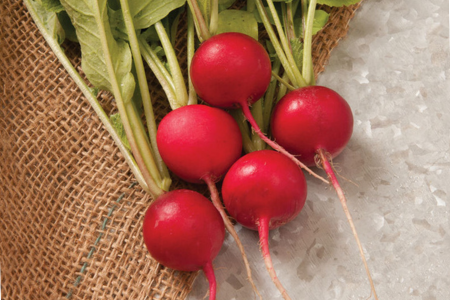
'Sora' is a heat-tolerant organic variety that produces high-quality roots.
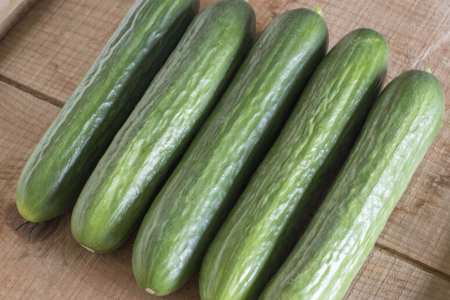
Known for its ability to set fruit under heat stress, 'Katrina' is very high yielding with excellent uniformity.
Warm-Loving Crops
Crops like tomatoes or cucumbers generally love warmth, but even they can become stressed in extreme heat. Heat stress might cause aborted flowers and therefore low yields, or sunscald on fruits could make them unmarketable.
Cucumbers:
Under heat stress, cucumbers may abort many of their flowers and therefore set fewer fruit. Heat tolerant varieties have shown to hold their flowers more reliably in higher temperatures, as compared to other cucumber varieties.Tomatoes:
Under heat stress, tomatoes may abort many of their flowers and therefore set fewer fruit. Heat tolerant varieties have shown to hold their flowers more reliably in higher temperatures, as compared to other tomato varieties.
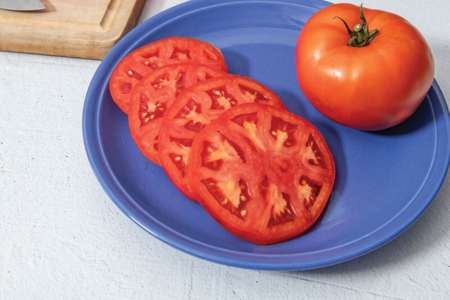
'Jolene' is a smooth, deep red beefsteak that sets fruit in heat when other tomatoes will not. It also has strong TYLCV resistance for growers in the Deep South.
Learn More
- Shop All Heat Tolerant Varieties • Product Listing
- Beat the Heat • Cultural Practices to Offset Summer Heat • Article
- Getting Cool-Weather Crops Through Hot Weather Spells • Article
- Lettuce & Greens for Southern Growers • Webinar Resources
- How Flower Farmers Are Adapting to Changing & Challenging Climatic Conditions • Article


